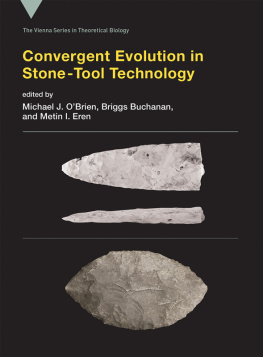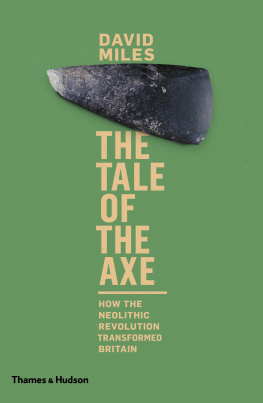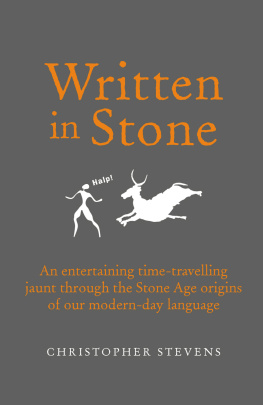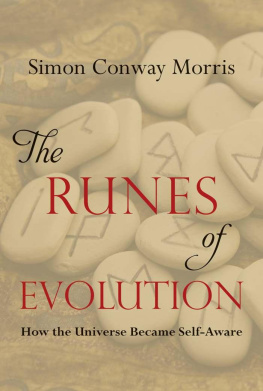Vienna Series in Theoretical Biology
Gerd B. Mller, editor-in-chief
Thomas Pradeu and Katrin Schfer, associate editors
The Evolution of Cognition, edited by Cecilia Heyes and Ludwig Huber, 2000
Origination of Organismal Form, edited by Gerd B. Mller and Stuart A. Newman, 2003
Environment, Development, and Evolution, edited by Brian K. Hall, Roy D. Pearson, and Gerd B. Mller, 2004
Evolution of Communication Systems, edited by D. Kimbrough Oller and Ulrike Griebel, 2004
Modularity: Understanding the Development and Evolution of Natural Complex Systems, edited by Werner Callebaut and Diego Rasskin-Gutman, 2005
Compositional Evolution: The Impact of Sex, Symbiosis, and Modularity on the Gradualist Framework of Evolution, by Richard A. Watson, 2006
Biological Emergences: Evolution by Natural Experiment, by Robert G. B. Reid, 2007
Modeling Biology: Structure, Behaviors, Evolution, edited by Manfred D. Laubichler and Gerd B. Mller, 2007
Evolution of Communicative Flexibility, edited by Kimbrough D. Oller and Ulrike Griebel, 2008
Functions in Biological and Artificial Worlds, edited by Ulrich Krohs and Peter Kroes, 2009
Cognitive Biology, edited by Luca Tommasi, Mary A. Peterson, and Lynn Nadel, 2009
Innovation in Cultural Systems, edited by Michael J. OBrien and Stephen J. Shennan, 2010
The Major Transitions in Evolution Revisited, edited by Brett Calcott and Kim Sterelny, 2011
Transformations of Lamarckism, edited by Snait B. Gissis and Eva Jablonka, 2011
Convergent Evolution: Limited Forms Most Beautiful, by George McGhee, 2011
From Groups to Individuals, edited by Frdric Bouchard and Philippe Huneman, 2013
Developing Scaffolds in Evolution, Culture, and Cognition, edited by Linnda R. Caporael, James Griesemer, and William C. Wimsatt, 2014
Multicellularity: Origins and Evolution, edited by Karl J. Niklas and Stuart A. Newman, 2015
Vivarium: Experimental, Quantitative, and Theoretical Biology at Viennas Biologische Versuchsanstalt, edited by Gerd B. Mller, 2017
Landscapes of Collectivity in the Life Sciences, edited by Snait B. Gissis, Ehud Lamm, and Ayelet Shavit, 2017
Convergent Evolution in Stone-Tool Technology, edited by Michael J. OBrien, Briggs Buchanan, and Metin I. Eren, 2018
Convergent Evolution in Stone-Tool Technology
edited by Michael J. OBrien, Briggs Buchanan, and Metin I. Eren
The MIT Press
Cambridge, Massachusetts
London, England
2018 Massachusetts Institute of Technology
All rights reserved. No part of this book may be reproduced in any form by any electronic or mechanical means (including photocopying, recording, or information storage and retrieval) without permission in writing from the publisher.
This book was set in Times New Roman by Toppan Best-set Premedia Limited. Printed and bound in the United States of America.
Library of Congress Cataloging-in-Publication Data
Names: OBrien, Michael J. (Michael John), 1950- editor. | Buchanan, Briggs (Briggs Wheeler), editor. | Eren, Metin I., 1982- editor.
Title: Convergent evolution in stone-tool technology / edited by Michael J. OBrien, Briggs Buchanan, and Metin I. Eren.
Description: Cambridge, MA : The MIT Press, 2018. | Series: Vienna series in theoretical biology | Includes bibliographical references and index.
Identifiers: LCCN 2017038928 | ISBN 9780262037839 (hardcover : alk. paper)
eISBN 9780262346153
Subjects: LCSH: Tools, Prehistoric. | Stone implements. | Paleolithic period.
Classification: LCC GN799.T6 C56 2018 | DDC 930.1/2dc23 LC record available at https://lccn.loc.gov/2017038928
ePub Version 1.0
d_r0
Series Foreword
Biology is a leading science in this century. As in all other sciences, progress in biology depends on the interrelations between empirical research, theory building, modeling, and societal context. But whereas molecular and experimental biology have evolved dramatically in recent years, generating a flood of highly detailed data, the integration of these results into useful theoretical frameworks has lagged behind. Driven largely by pragmatic and technical considerations, research in biology continues to be less guided by theory than seems indicated. By promoting the formulation and discussion of new theoretical concepts in the biosciences, this series intends to help fill important gaps in our understanding of some of the major open questions of biology, such as the origin and organization of organismal form, the relationship between development and evolution, and the biological bases of cognition and mind. Theoretical biology has important roots in the experimental tradition of early-twentieth-century Vienna. Paul Weiss and Ludwig von Bertalanffy were among the first to use the term theoretical biology in its modern sense. In their understanding the subject was not limited to mathematical formalization, as is often the case today, but extended to the conceptual foundations of biology. It is this commitment to a comprehensive and cross-disciplinary integration of theoretical concepts that the Vienna Series intends to emphasize. Today, theoretical biology has genetic, developmental, and evolutionary components, the central connective themes in modern biology, but it also includes relevant aspects of computational or systems biology and extends to the naturalistic philosophy of sciences. The Vienna Series grew out of theory-oriented workshops organized by the KLI, an international institute for the advanced study of natural complex systems. The KLI fosters research projects, workshops, book projects, and the journal Biological Theory, all devoted to aspects of theoretical biology, with an emphasis onbut not restriction tointegrating the developmental, evolutionary, and cognitive sciences. The series editors welcome suggestions for book projects in these domains.
Gerd B. Mller, Thomas Pradeu, Katrin Schfer
Preface and Acknowledgments
Stone tools and the debris from stone-tool manufacture are found throughout the archeological record of humans and their ancestors. The first unambiguous hominin-produced tools appeared approximately 2.6 million years ago, although recent studies have shown indirect evidence that hominins began using stone tools nearly 3.4 million years ago. Stone has been used to make tools in nearly all regions of the globe that have been inhabited. Given the nearly ubiquitous use of stone tools by hominins, their study is an important line of inquiry for shedding light on questions of evolution and behavior. Researchers have long studied stone tools and have investigated a wide range of topics, including the evolution of technology, prehistoric economy, hominin global dispersals, and ancient engineering, but the topic of evolutionary convergence remains an understudied yet potentially important avenue of research.
Convergence is the phenomenon by which evolutionary processes result in the same, or similar, forms in independent lineages as a result of functional or developmental constraints. In studies of stone tools, identifying cases of convergence is of particular importance because similarities in form and function are often used to suggest historical connections among prehistoric groups. Identifying cases of convergence would refute hypotheses that otherwise would suggest some degree of physical or cultural connection among toolmakers. The reason that convergence remains understudied has to do in large part with the unsupported assumption that there are endless stone-tool production techniques and forms.
Considerable reason exists to doubt this widely held belief because the manufacture of stone tools is a reductive process, whereby stone flakes are removed from larger cores to make smaller tool forms. As stone is reduced, the number of possible outcomes in terms of form becomes increasingly constrained. Widespread convergence of lithic technologies is also possible as a result of the fracturing properties of stone, which are governed by a specific set of physical constraints.
Next page







